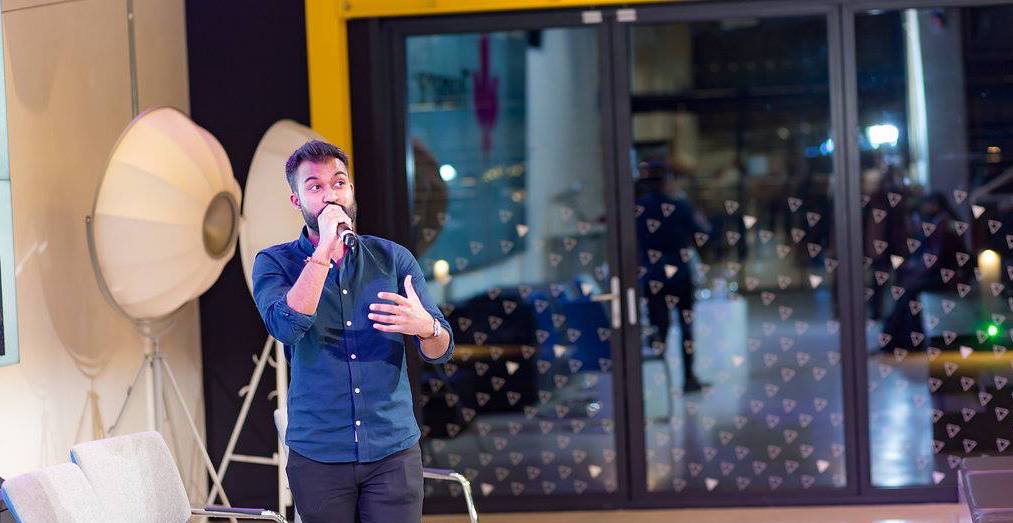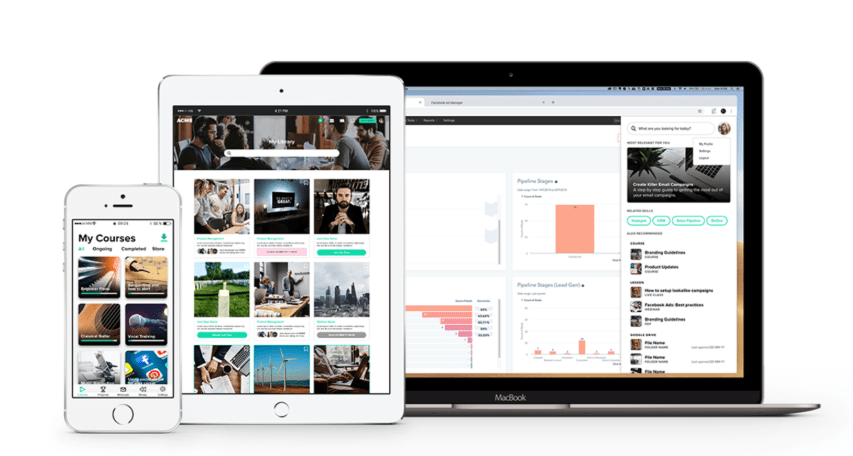The AI-powered learning recommendation tool promises to speed-up on-the-job upskilling and help address the skills gap

Some 77% of adults claim they want to learn new skills in order to improve employability (Credit: Pxhere)
The need to address the skills gap has been acknowledged by CEOs across sectors. HowNow CEO Nelson Sivalingam believes that his AI learning platform may provide the answer.
The demand for learning new skills has never been more pressing, with both businesses and employees recognising the need to retrain to thrive in a fast-changing job market.
Some 77% of adults claim they want to learn new skills or completely retrain to improve their future employability, according to research from PwC.
Similarly, 79% of CEOs worry about the availability of key skills in the labour market and list it as one of their top three concerns.
While many people are aware of the need to upskill to meet the demands of a changing economy that’s moving to digitisation and automation, the methods of training employees are not fit for purpose, according to HowNow boss Nelson Sivalingam.
“We’ve all been victims of really bad training at some point in our careers,” he says.
“There is an evident need for learning and a lot of government data on the impact of the skills gap on the economy and society as a whole.
“Given we spend most of our time at work, it seems like the logical thing for employers to invest in their employees’ development for their own selfish gains, and for employees to benefit and develop themselves professionally and personally.
“You need to make sure that your workforce is well equipped – not just to do their job today, but also to spot opportunities in what tomorrow might look like.”
How HowNow uses AI to recommend learning materials
Sivalingam believes that speeding up the upskilling process could help to rectify the issue, and claims that on-the-job learning has long been due an overhaul.
He says: “In a climate of uncertain times and fast-changing markets, the quickest learner wins.
“The problem is that the existing learning platforms and technology in this space doesn’t enable it.”

E-learning platform HowNow works as a recommendation tool, bringing together different learning materials — such as videos and blogs — onto a single platform.
Using a similar machine-learning algorithm to Netflix, it highlights the skills that are most relevant to the user’s job and areas that the employee should work on.
Sivalingam claims that the AI assesses data on a user’s workplace persona, their role within an organisation, the skills people in similar positions are learning and their learning styles to “autonomously surface relevant content”.
It also analyses market data and the skills requirements on job advertisements, which Sivalingam says, “helps enable job mobility” and “identify the most in-demand skills”.
“We wanted to see what a learning programme would look like if it was built from scratch today,” he adds.
“Bring together all the learning resources, whether they are internal or external, online or offline.”
Why learning new skills at work requires a rebrand
Corporate training is traditionally associated with staff training days and compliance meetings, which both have negative connotations for many workers.
Sivalingam believes that “companies need to change the culture and rebrand learning so it fits with the existing values in the organisation”.

He adds: “The skills gap is essentially a performance-potential gap.
“If you don’t have a way to enable learning then the workplace won’t be able to identify new opportunities.
“Organisations need to remain future-ready and innovate in order to stay relevant, and that’s the risk they run by not addressing this gap.
“We’ve seen so many organisations over the last few years who haven’t survived their business model being disrupted.
“There’s only one thing worse than a skills gap and that’s a skills gap that you don’t know about. That’s the risk that most companies are taking right now.”
Currently, 80% of corporate spending on learning is in the area of compliance, while a much smaller percentage goes towards continuous learning.
“Compliance might save you from a lawsuit, but it won’t save you from disruption,” Sivalingam says.
South Africa and Asia looking to ‘leapfrog’ skills gap
HowNow’s learning platform has 50,000 users working at 127 organisations across 14 countries.
Despite the domestic UK and European sectors remaining the company’s strongest markets, Sivalingam has seen a growth in demand in South Africa and Asia.
The company now works with some of the biggest banks in South Africa and has benefited from the Skills Future national movement in Singapore.
Sivalingam says: “Many organisations in those territories realise the skills gap problem exists — there is an incredible appetite there.
“Because of rapid globalisation, they can now leapfrog right to the forefront of technology and skip some of the previous stages.
“Rather than playing catch-up with industries in other territories, they are trying to jump many of the stages other businesses have gone through.
“They are also very well-informed markets that understand the challenges the workforce face.”
The interest in upskilling in these regions may mean that they have a workforce that is most prepared for the future.


